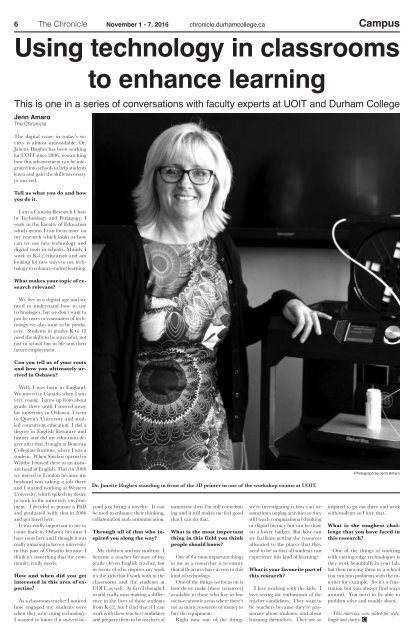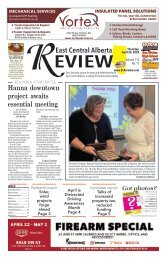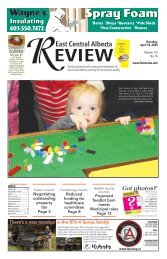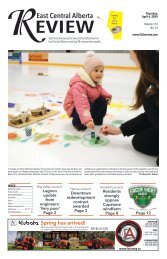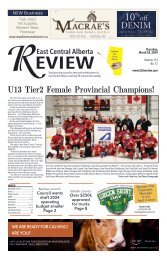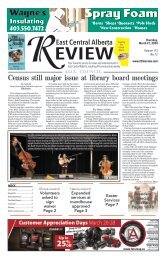Create successful ePaper yourself
Turn your PDF publications into a flip-book with our unique Google optimized e-Paper software.
6 The <strong>Chronicle</strong> November 1 - 7, 20<strong>16</strong> chronicle.durhamcollege.ca Campus<br />
Using technology in classrooms<br />
Jenn Amaro<br />
The <strong>Chronicle</strong><br />
The digital craze in today’s society<br />
is almost unavoidable. Dr.<br />
Janette Hughes has been working<br />
for UOIT since 2006, researching<br />
how this advancement can be integrated<br />
into schools to help students<br />
learn and gain the skills necessary<br />
to succeed.<br />
Tell us what you do and how<br />
you do it.<br />
I am a Canada Research Chair<br />
in Technology and Pedagogy. I<br />
work in the Faculty of Education<br />
which means I can focus more on<br />
my research which looks at how<br />
can we use new technology and<br />
digital tools in schools. Mainly I<br />
work in K-12 education and am<br />
looking for new ways to use technology<br />
to enhance student learning.<br />
What makes your topic of research<br />
relevant?<br />
We live in a digital age and we<br />
need to understand how to use<br />
technologies, but we don’t want to<br />
just be users or consumers of technology<br />
we also want to be producers.<br />
Students in grades K to 12<br />
need the skills to be successful, not<br />
just in school but in life and their<br />
future employment.<br />
Can you tell us of your roots<br />
and how you ultimately arrived<br />
in Oshawa?<br />
to enhance learning<br />
This is one in a series of conversations with faculty experts at UOIT and Durham College<br />
Well, I was born in England.<br />
We moved to Canada when I was<br />
very young. I grew up from about<br />
grade three until I moved away<br />
for university in Oshawa. I went<br />
to Queen’s University and studied<br />
concurrent education. I did a<br />
degree in English literature and<br />
history and did my education degree<br />
after that. I taught at Donevan<br />
Collegiate Institute, where I was a<br />
student. When Sinclair opened in<br />
Whitby I moved there as an assistant<br />
head of English. Then in 2000<br />
we moved to London because my<br />
husband was taking a job there<br />
and I started working at Western<br />
University, which spiked my desire<br />
to work in the university environment.<br />
I decided to pursue a PhD<br />
and graduated (with) that in 2006<br />
and got hired here.<br />
It was really important to me to<br />
come back to Oshawa because I<br />
have roots here and I thought it was<br />
really amazing to have a university<br />
in this part of Ontario because I<br />
think it’s something that the community<br />
really needs.<br />
How and when did you get<br />
interested in this area of expertise?<br />
Dr. Janette Hughes standing in front of the 3D printer in one of the workshop rooms at UOIT.<br />
As a classroom teacher I noticed<br />
how engaged my students were<br />
when they were using technology.<br />
I wanted to know if it moved beyond<br />
just being a novelty. It can<br />
be used to enhance their thinking,<br />
collaboration and communication.<br />
Through all of that who inspired<br />
you along the way?<br />
My children and my students. I<br />
became a teacher because of my<br />
grade eleven English teacher, but<br />
in terms of who inspires my work<br />
it’s the kids that I work with in the<br />
classrooms and the students at<br />
UOIT, as well. At first I thought I<br />
would really miss making a difference<br />
in the lives of those students<br />
from K-12, but I find that if I can<br />
work with these teacher candidates<br />
and prepare them to be teachers of<br />
tomorrow then I’m still contributing<br />
and it still makes me feel good<br />
that I can do that.<br />
What is the most important<br />
thing in this field you think<br />
people should know?<br />
One of the most important things<br />
to me as a researcher is to ensure<br />
that all learners have access to this<br />
kind of technology.<br />
One of the things we focus on is<br />
how do we make [these resources]<br />
available to those who live in low<br />
socio-economic areas where there’s<br />
not as many resources or money to<br />
buy the equipment.<br />
Right now one of the things<br />
we’re investigating is how can we<br />
sometimes unplug activities so they<br />
still teach computational thinking<br />
or digital literacy but can be done<br />
on a lower budget. But how can<br />
we facilitate getting the resources<br />
allocated to the places that they<br />
need to be so that all students can<br />
experience this kind of learning?<br />
What is your favourite part of<br />
this research?<br />
I love working with the kids. I<br />
love seeing the enthusiasm of the<br />
teacher candidates. They want to<br />
be teachers because they’re passionate<br />
about students, and about<br />
learning themselves. They are so<br />
Photograph by Jenn Amaro<br />
inspired to go out there and work<br />
with students so I love that.<br />
What is the toughest challenge<br />
that you have faced in<br />
this research?<br />
One of the things of working<br />
with cutting edge technologies is<br />
they work beautifully in your lab,<br />
but then moving them to a school<br />
you run into problems with the internet<br />
for example. So it’s a frustration<br />
but you always find ways<br />
around. You need to be able to<br />
problem solve and trouble shoot.<br />
This interview was edited for style,<br />
length and clarity.


